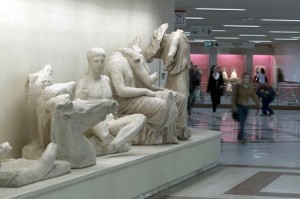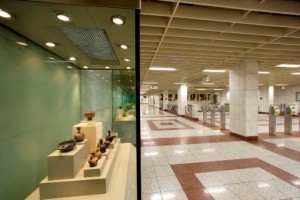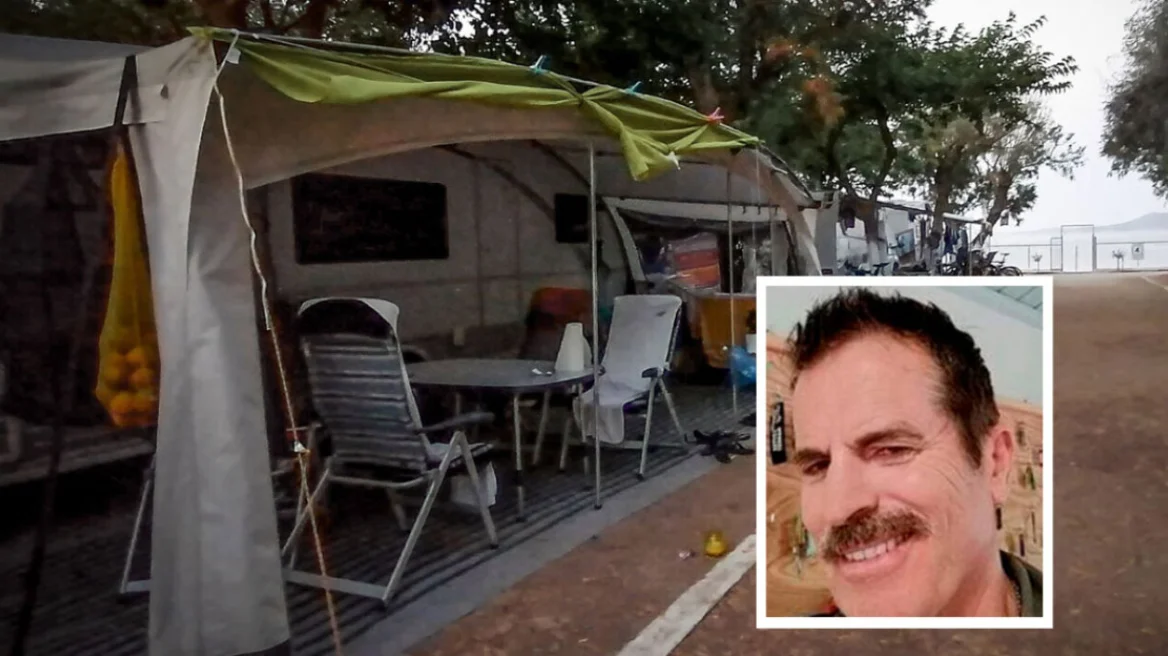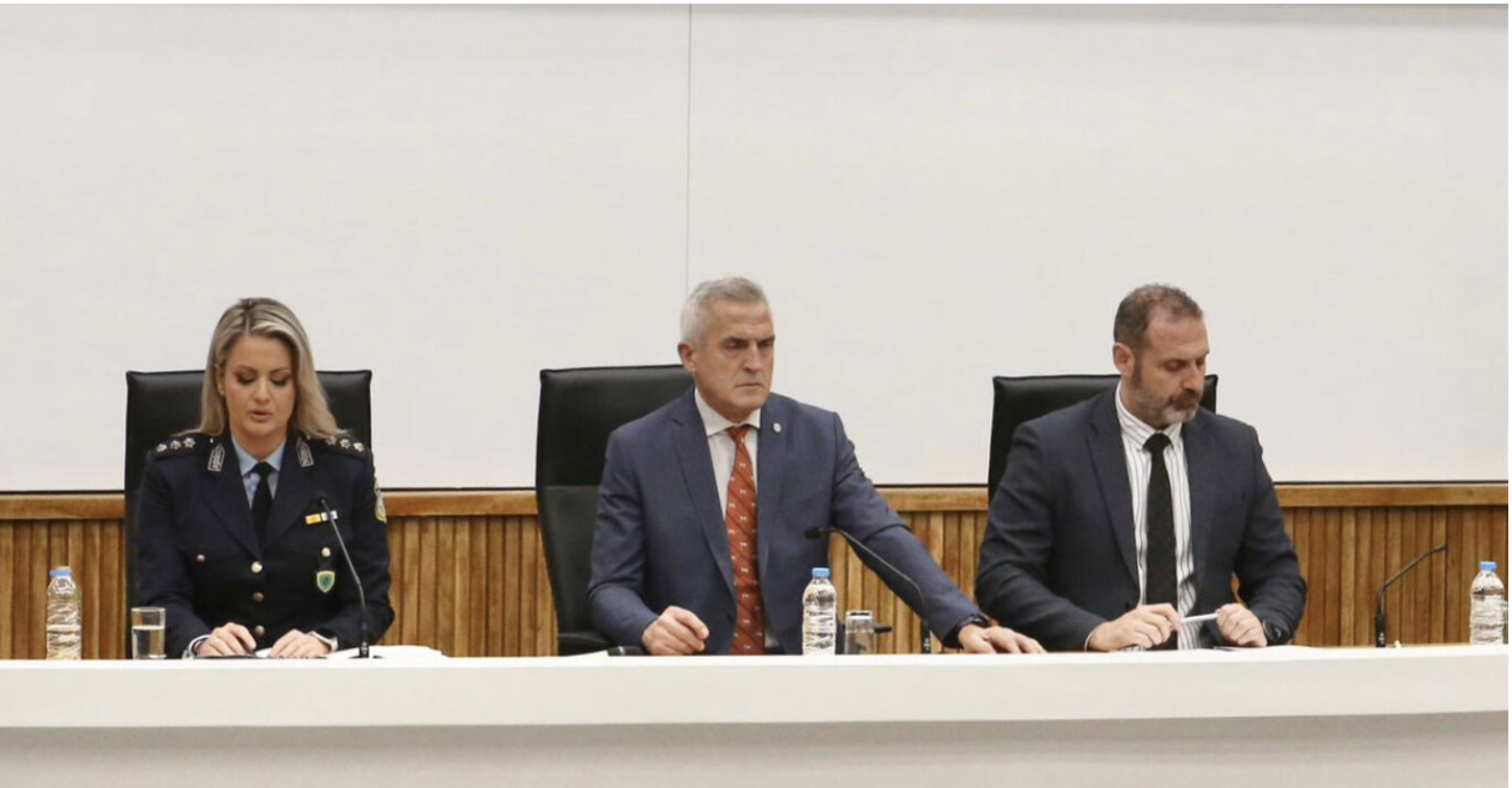Did you know that you can visit an underground museum in Athens with replicas of the famous sculptures of Parthenon, Athenian amphoras, ancient toys, funeral monuments and parts of one of the oldest bridges found in Attica? The exhibition of antiquities found in the Athens metro rail area is open to the public and free of charge. In order to visit it, simply board the next train and make a quick stop at the following stations:
Syntagma (blue line)
You can start your journey by taking a good look at the stratigraphy of Athens, covering a period from the early 5th century B.C. till the Ottoman times, which is exhibited at Syntagma Station. You will also see the skeleton of a young lady who lived in the 4th century B.C. lying in her tomb between layers of soil. In addition, there are displays with pipes of the ancient water supply and sanitation system of Athens, lamps, funerary monuments and a small part of a mosaic floor in an ancient house found next to the metro station.
Monastiraki (blue line)
At Monastiraki station, the huge photograph of an underground tunnel full of pottery fragments will give you a picture of the archaeological treasures found during the metro underground digging works. If you are travelling towards Kifissia, don’t miss the riverbed of Iridanos. Iridanos is one of the three ancient rivers of Attica, with a continuous flow through the Attican basin to the present day. According to the myth, this is where Phaethon, the son of god Helios [Sun], fell when he was struck off his father’s chariot, by Zeus’ lightning.
Elaionas (blue line)
Make a quick stop in order to admire the remains of the oldest bridge found in Attica. The three pillars of the ancient bridge of Kifissos river date from as far back as the 5th and 6th century B.C.
Aigaleo (blue line)
Walking around the metro corridors, you will discover ancient objects of everyday use, such as pottery, lamps, figurines, loom weights and offerings which were placed by the dead on their final journey. The model of a horse’s skeleton stands out, and the position of its head reveals a desperate attempt to be saved from the flooded Kifissos River. In addition, you can visit the remaining parts of the sacred path of Iera Odos and of a nearby cemetery.
Acropoli (red line)
Walking along the metro platforms you will admire the replicas of the Parthenon frieze created by the great sculptor Pheidias. The main subject of the frieze is the procession of Panathinaea, the city’s most important festival in honour of the goddess Athena. Young riders proceeding at a galloping pace or preparing themselves for the grand procession will keep you company while you are waiting for the next train.
Up the escalators, on your way out of the station, take some time to visit the small exhibition of items of everyday use. You will see ancient toys for children, amphoras for the transportation and storage of olive oil and wine, a model of a vertical greek loom and fragments of pottery, which include an Athenian amphora given as a prize to one of the winners of the Panathenaic Games.
Finally, heading towards the exit, you will see replicas of the sculptures of the east pediment of the Parthenon which represent the birth of Athena out of the head of Zeus. You can see god Helios on his chariot rising from the waves, god Dionysus, Demeter with her daughter Persephone and the beautiful Hebe or Artemis.
Other stations
You can see parts of the Athens water system built by Peisistratos at Evangelismos station (blue line). The remains of some rural settlements are on display in Dafni station (red line) and tomb findings can be seen at Panepistimio station (red line).
Tip: The biggest excavation programme ever accomplished in Greece was during the construction of Athens metropolitan railway (1993-2000). More than 50.000 findings came to light during the metro underground digging works.
Looking for the metro plan? Just a click away.
Source: visitgreece
Ask me anything
Explore related questions








